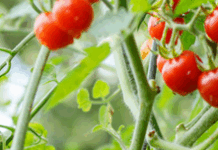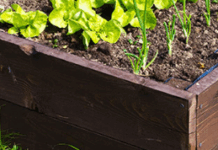By: Scott Eckert, County Extension Agent, Horticulture
Fall is a great time to plant, over seed, core-aerate, power rake and fertilize tall fescue so to continue on the topic of lawns, what are the benefits of grass?
Turfgrass is so common in everyday life that people may not appreciate its value. Research continues to uncover environmental, economic, health, and safety benefits of natural turfgrass found in lawns, athletic fields, parks, and roadsides.
Healthy soil – Populations of beneficial organisms thrive within the root systems of healthy grasses, turning dead plants and organisms into healthy soils.
Water filtration – Pollutants bind tightly to the roots and thatch layer of grass systems. Microbial organisms work with the thatch layer to keep surface and groundwater clean. Grass buffer strips located in and around farm fields, streams, and waterways filter soil and remove chemicals before they enter surface and groundwater. In urban areas, grasses filter water that contains contaminants from oil, grease, and other household and industrial wastes.
Erosion control – Grass reduces soil erosion caused by water and wind. Grass develops a thick root and shoot system forming a wall that prevents soil erosion. For example, with new road and home construction, sod is laid next to the curb to prevent soil erosion and act as a buffer strip. The strip filters runoff water before it enters the street and storm water drains, which lead to nearby streams and surface waters. Regular mowing increases shoot density and root mass, which improves soil stability. Grass prevents water and wind erosion by slowing down the flow of water and holding soil in place. Research shows that sediment loss from grass is negligible under normal rainfall conditions.
Noise reduction – Grasses planted along a roadside will decrease the noise level by 40 percent compared to hard surfaces.
Natural air conditioning – Urban areas with fewer grasses and landscape plants are 10 to 15 percent warmer than their rural neighbors. Water evaporates through the stomata, the tiny openings in the grass blades, cooling them and the surrounding environment. During the summer, lawns are 30 percent cooler than asphalt and 14 percent cooler than bare ground.
Reduces glare – Variation in the size, shape, and angle of individual grass blades disperses sunlight. This reduces glare and improves visibility in sunny conditions.
Pollution control – A healthy lawn produces an abundance of leaf tissue to trap dirt and dust particles and protect air quality. About 12 million tons of dust is released into the atmosphere
each year in the U.S., and much of it is trapped by grass.
Emotional and physical well-being – Vegetated landscapes not only enhance the environment, but they improve mental, physical, and emotional health. Hospital patients recover faster when their rooms face areas with grass and landscape plants.
Absorbs carbon dioxide, releases oxygen – During photosynthesis, grasses remove carbon dioxide and add oxygen to the atmosphere. Healthy turf areas give off abundant oxygen, which humans need to survive. Over the course of a year, a 2,500 square-foot lawn absorbs enough carbon dioxide to produce oxygen for a family of four.
Conditions soil – Grass roots grow continuously — dying, decomposing, and regrowing. This builds humus, which keeps soil biologically active and improves physical and chemical properties. The best, most fertile soils in the world were created under
grasslands.
Keeps pollen in check – Healthy lawns have few weeds, which reduces pollen levels. Regular mowing also prevents grass plants and weeds from producing pollen-bearing seedheads and flowers.
Discourages small pests – Small pests (snakes, mice, and rats) and insects (chiggers and mosquitoes) live in tall grasses. Regular mowing keeps these undesirable pests away.
Improves community health and safety – Most outdoor recreational activities take place on grass. There are fewer injuries and they tend to be less severe when athletes play on natural grass compared to synthetic turf athletic fields. Adding turf to city parks has been shown to improve community relationships and emotional well-being, and to reduce crime. Parks and golf courses
provide natural habitat for plants and animals in places that would normally be used for industry or housing. Many golf courses are certified as bird and wildlife sanctuaries by the Audubon Society.
Debbie Church
Office Professional
Harvey County Extension
800 N Main, Room 11, P.O. Box 583
Newton, KS. 67114 316-284-6930




